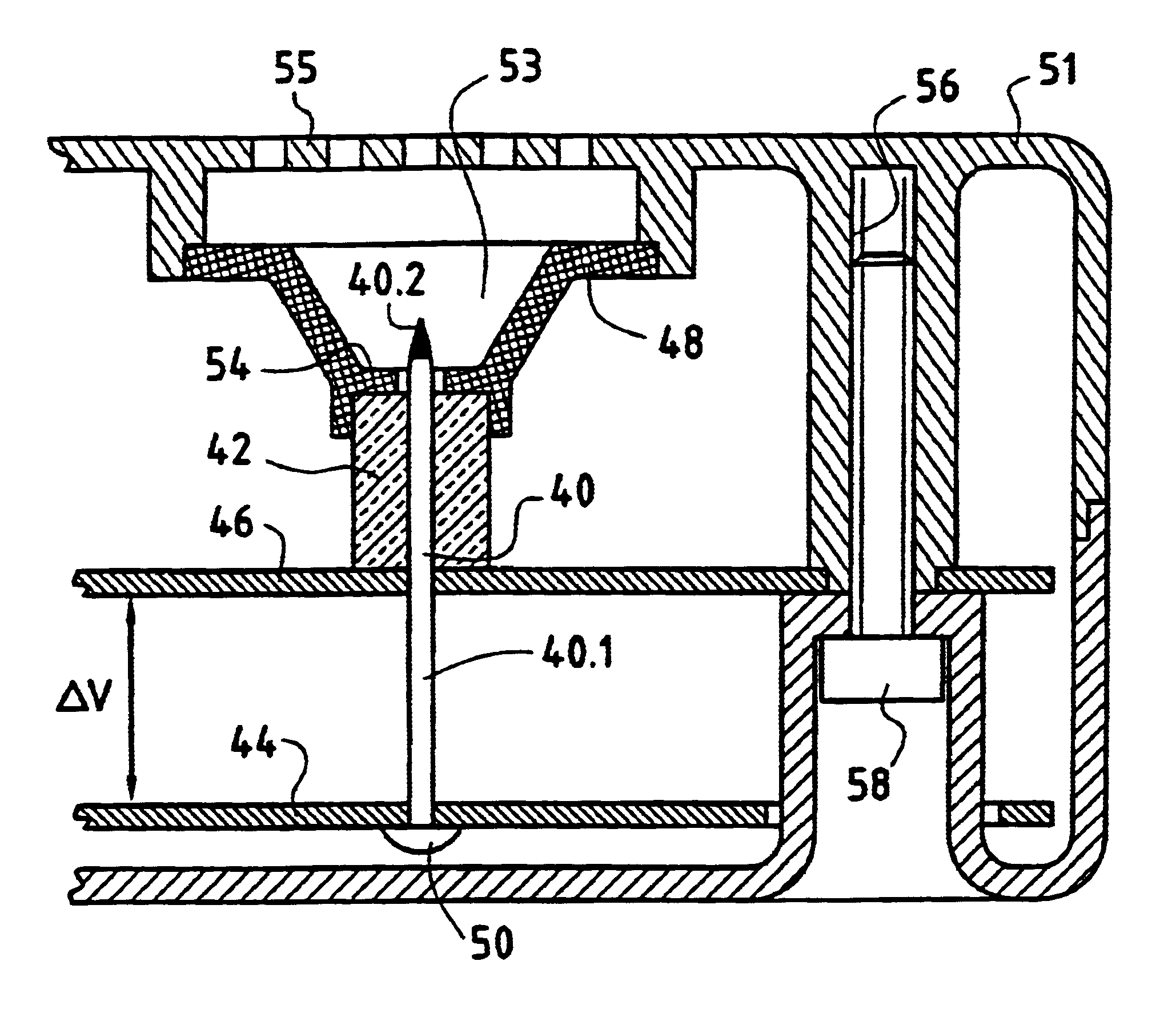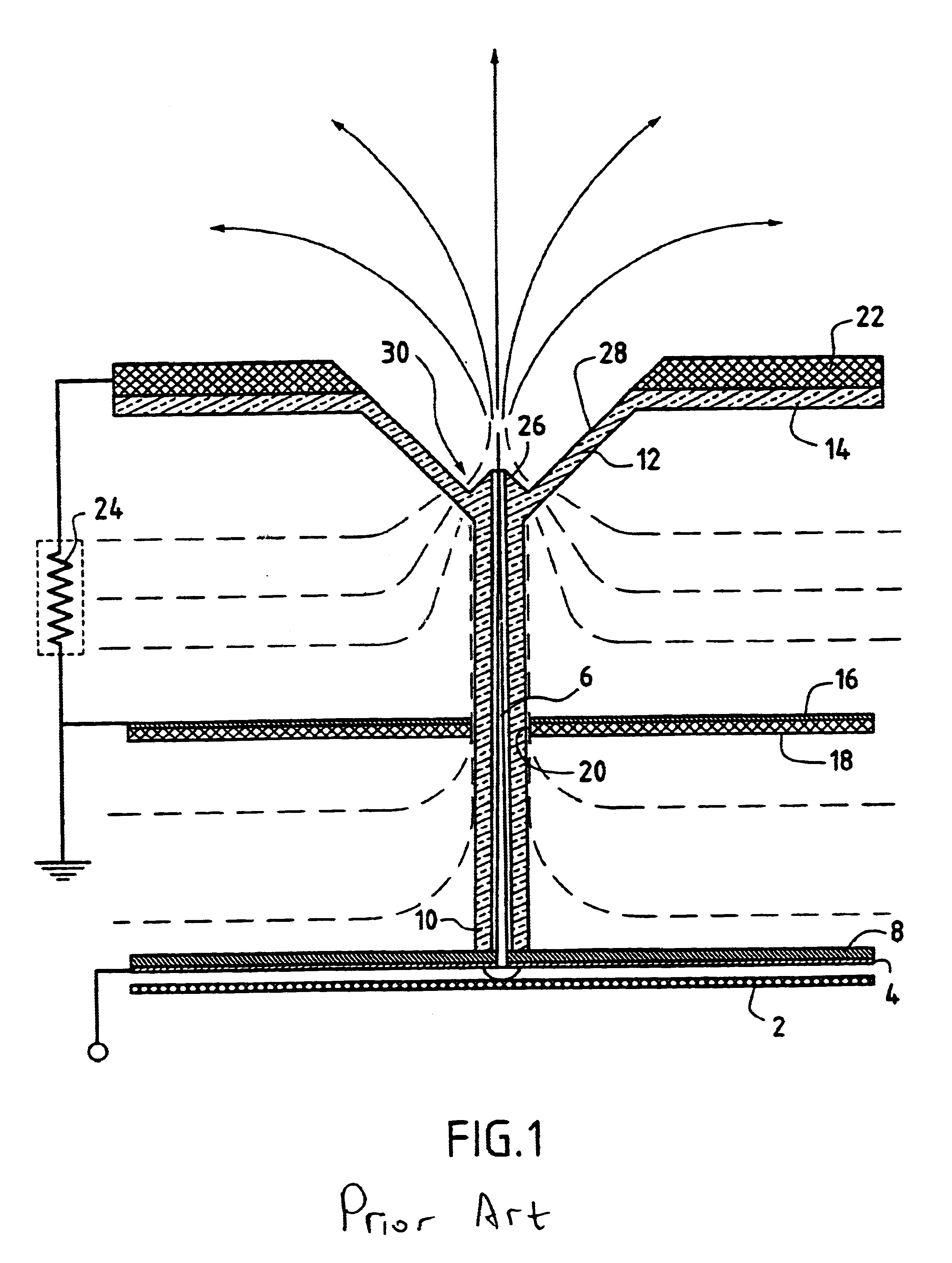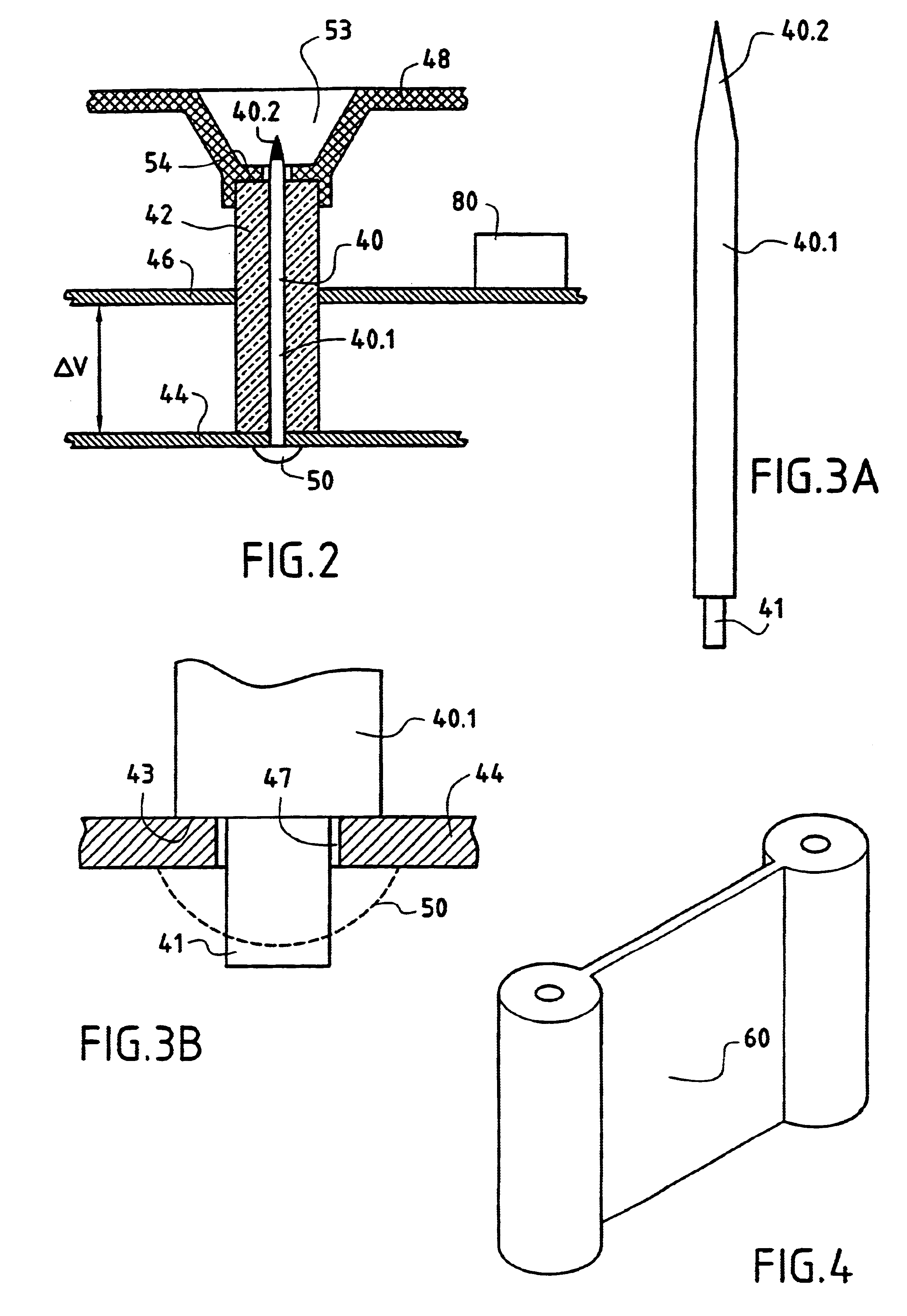Ion generating device
a generation device and ion technology, applied in the field of ion generating devices, can solve the problems of inability to ensure inability to ensure the long-term and consistent production of ions, and possible negative ions to circulate,
- Summary
- Abstract
- Description
- Claims
- Application Information
AI Technical Summary
Benefits of technology
Problems solved by technology
Method used
Image
Examples
first embodiment
apparatus of the invention is described with reference to FIG. 2.
The apparatus comprises an emitter needle or "point" 40 essentially made of a noble material. The needle is preferably made of titanium or of platinum or of a compound of those two materials.
It is also possible to use a stainless metal or indeed silver, stainless steel, brass, or nickel, or an alloy of those materials, e.g. a brass-nickel alloy or a silver-stainless steel alloy. Nevertheless, it is titanium or platinum or a platinum-titanium mixture that provides best performance for the apparatus, as explained below.
The needle has a cylindrical portion 40.1 extended by a conical end 40.2.
It is inserted in a sheath 42 of a composite material based on glass fiber reinforced unsaturated polyester.
Such a material can also include chlorophthalic resin.
The material can be formed by pultrusion, for example.
By way of example, the material of the sheath 42 can have a glass content lying in the range 50% by 80% by weight of the...
example i
A first example concerns a study on the effectiveness of the ionizer in a gray airlock for loader personnel (in a unit in the pharmaceutical industry).
As described above, the apparatus used is capable of emitting 4.times.10.sup.12 negative ions per second, thus enabling it to process on average 80 m.sup.3 to 100 m.sup.3 of air
The apparatus was placed in the gray airlock for loader personnel. A high level of microbial contamination of the air had been observed in the airlock, over a period of several weeks.
Tests were performed before the ionizer was installed, and while the ionizer was in use.
Particular tests were performed using a METONE 217 type particle counter, serial number 92 22 51 47 MM, fitted with an isokinetic probe. Tests were performed during periods of activity. That applies to particle testing.
In addition, bacteriological tests were performed. Tests were applied to ambient air and to surfaces (wash-basins and floors). Tests were performed in the same manner as routine s...
example ii
This example relates to the effect of an ionizer in a delivery room.
The volume treated was 1200 m.sup.3 and seven apparatuses of the invention were installed in the room.
Tests were performed by a biological hygiene technician when the room was at rest without any human presence, on Apr. 9, 1998 (day D0 prior to equipment being installed) and on April 10 and Apr. 11, 1998 (respectively days D1 and D2).
The particle counting apparatus used was of the "MET ONE 227" type having a flow rate of 2.8 liters per minute, with samples being taken over a duration of 1 minute. That apparatus was installed in the middle of the room.
Measurements of biological contamination of the air were performed using an apparatus of the "SAMPL'AIR" type at a flow rate of 100 liters per minute with samples taken over a period of 10 minutes. That apparatus was likewise installed in the middle of the room.
The results of particle counting and of performing microbiological tests on surfaces, and of testing air for b...
PUM
 Login to View More
Login to View More Abstract
Description
Claims
Application Information
 Login to View More
Login to View More - R&D
- Intellectual Property
- Life Sciences
- Materials
- Tech Scout
- Unparalleled Data Quality
- Higher Quality Content
- 60% Fewer Hallucinations
Browse by: Latest US Patents, China's latest patents, Technical Efficacy Thesaurus, Application Domain, Technology Topic, Popular Technical Reports.
© 2025 PatSnap. All rights reserved.Legal|Privacy policy|Modern Slavery Act Transparency Statement|Sitemap|About US| Contact US: help@patsnap.com



